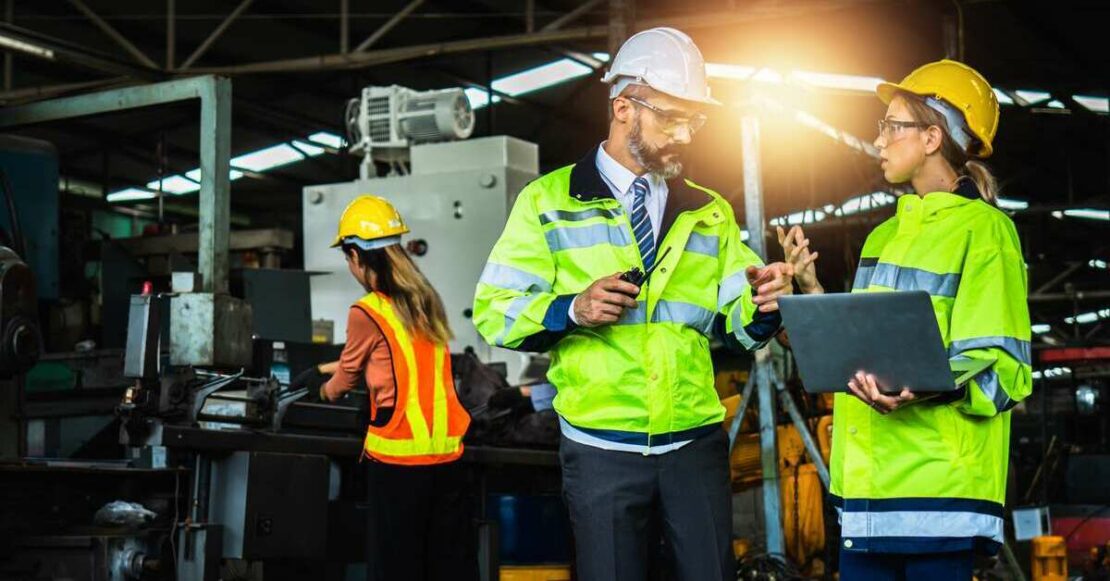
A sophisticated approach to security is the backbone of protecting modern industrial, manufacturing and factory operations. As threats evolve, so do the measures to detect and deter them.
Currently, industrial sites rely on a combination of internal and external security measures, including sophisticated surveillance systems, access control and perimeter security.
However, the landscape is rapidly changing, and the future of industrial security is very exciting indeed. This article summarises the current state of security in the industrial sector and offers insight into the future, particularly over the next 5-10 years.
The current industrial security landscape
Today’s industrial security systems are a blend of CCTV, alarms, perimeter security and access control.
To summarise, internal CCTV surveillance is the backbone, providing real-time monitoring of operations.
Thermal cameras detect heat signatures, are useful in hazardous environments, and provide video footage in low and no-light conditions.
Furthermore, long-range PTZ (Pan-Tilt-Zoom), and bullet cameras offer extensive external surveillance.
Perimeter CCTV systems act as a first line of defence against intrusions. Additionally, biometric and facial recognition access control systems ensure that only authorised personnel can access sensitive areas.
As a result, these solutions enhance internal security and protect sites and people.
Emerging trends in industrial security
Depending on your thoughts on tech, the future of industrial security is exciting, with emerging trends like drone patrols and advanced AI coming into view.
Drones offer a mobile surveillance solution, capable of covering large areas that fixed cameras cannot. As a result, they can be particularly useful for perimeter patrols or monitoring hard-to-reach locations.
AI and video analytics are set to revolutionise industrial security systems with enhanced object detection capabilities, offering more precise and proactive threat identification.
Related reading
The future of industrial security: AI and machine learning
AI and machine learning are at the forefront of the next generation of industrial security. These technologies can analyse vast amounts of video data, identifying patterns and anomalies that might indicate a security threat.
Ai-driven analytics have been around for a while, and their capabilities are picking up pace.
From recognising specific individuals to detecting unusual activities, AI-enhanced systems provide a level of vigilance and analysis far beyond human capabilities.
However, integrating these advanced technologies comes with challenges. To summarise, these include data privacy concerns and the need for continuous algorithm updates.
Drone technology & industrial security
In the next section of this guide to the future of industrial security, we focus on drones and how they may be deployed in various settings.
Equipped with cameras and sensors, in the future, drones will perform regular patrols and respond to alarms.
Drones can quickly reach areas where a security breach is suspected, providing live feeds to security personnel. The future may see autonomous drones patrolling industrial sites, fully integrated with ground-based security systems.
The future of access control: beyond biometrics
Access control is also evolving. While biometric systems like fingerprint and iris scanners are currently prevalent, the future may see the rise of more advanced technologies.
Facial recognition and behavioural analytics are potential candidates, offering a seamless yet secure access control system.
These technologies could recognise individuals not just by their physical features but also by their behaviour patterns, adding layers of security.
The future of industrial security – summary
The future of industrial security is an integration of advanced technologies like AI, machine learning, and drone surveillance. As these technologies develop, they will provide more comprehensive and proactive security solutions for industrial sites.
The key to future security will be the ability to adapt and integrate these new technologies into existing systems, creating a more secure and efficient industrial environment. The next decade will undoubtedly see significant advancements in industrial security, making it more robust and responsive to the evolving threat landscape.
As we move forward, the adoption of these advanced security measures will be crucial in facing the challenges of the future, maintaining the integrity of industrial sites, and fostering a safe working environment.
Need the advice of a security specialist? Call us now on 0800 689 1835.